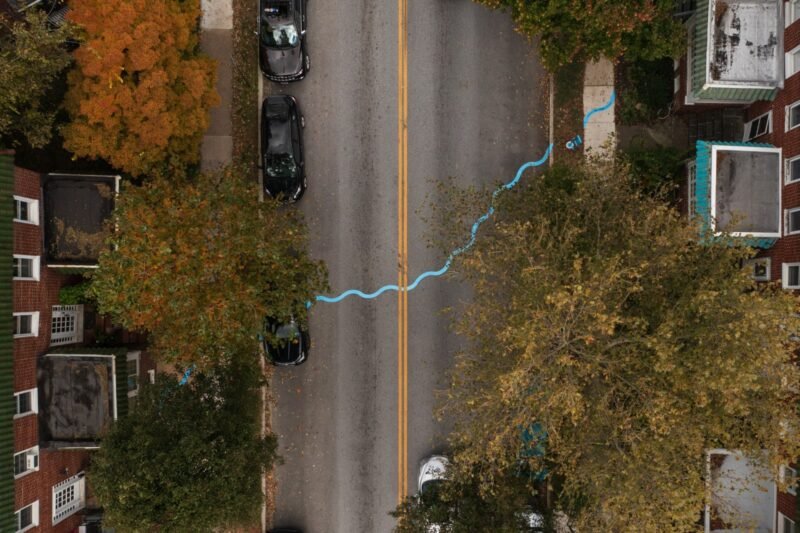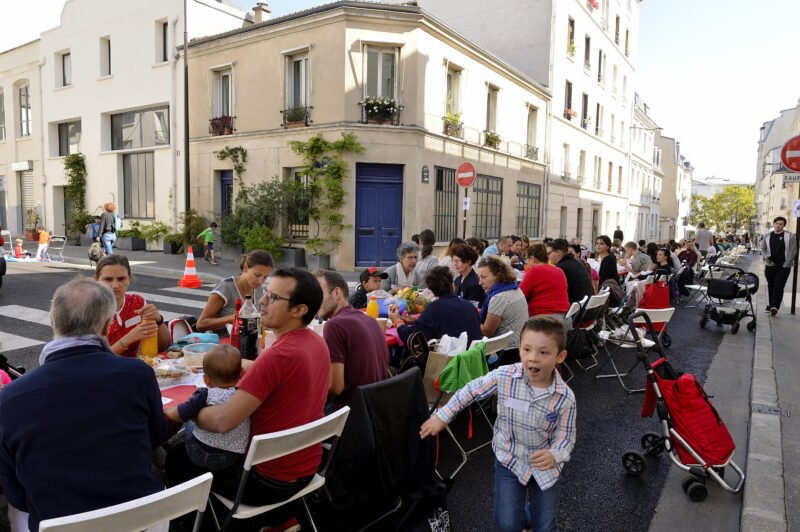Pop-Up Urban Experiments At The Human Scale
Urban design in Latvia’s capital of Riga has suffered from a legacy of Soviet-era, car-centric design and suburban sprawl. Wide, under-utilised streets are common throughout the city; the hipster hot-spot of Miera iela, or ‘Peace street’ being no exception. 90% of cars drive on top of the tram tracks, leaving much of the wide road unused and unavailable for other uses.
Pedestrians, cyclists and shop owners are forced to share what is left over on the narrow sidewalk. Frustrated by these latent inefficiencies, local creatives ‘Fine Young Urbanists’ decided to take matters into their own hands and constructed a 1:1 mockup to show the potential of a possible future streetscape.

It started as a model, like so many architectural projects before it. A simple proposal to reconfigure the street hierarchy. This would allow space for all traffic, refocusing the design to one centred on people, not the car. Many city officials weren’t convinced it was possible to include the amenity they proposed, which is where this human scale demonstration became a useful tool.

Building a 14m section of their proposal, the designers watched how it worked in the real world; using the same simple, bold and diagrammatic design language as their model. Residents, business owners and people passing by were then asked to comment on the design, opening up a dialogue with the community in a way otherwise not possible. The feed-back reinforced the desire for a more pedestrian friendly street design.

Other lessons were taken away from the project, provided by its success. “What we’ve learned is that the aesthetics are very important,” said Toms, one of the creators. Above the obvious functional requirements, the aesthetic delivery must be impactful so that the community pays attention. The photogenic blue of the panels and very public construction process meant that they project received maximum exposure. People are more likely to engage and the city authorities were much less likely to ignore such a bold and effective installation.

Toms and Evelina work in a way that extensively observes and collects input from the community. They believe that “it’s unrealistic to make everyone an architect”; so instead they bring the architecture to everyone. As well as their extensive consultative process, they see value in stepping away from their computers and getting their hands dirty. The model between number 9 and 10 Peace Street was built in 3 days – some of the work required contractors, but much of it was painting panels, picking up cigarette butts and clearing dog poo. These are jobs they did themselves, with a team of volunteers. To really engage in bottom-up city-making, getting dirty is a price you pay.
There are many examples of temporary urbanism, but few are as clear in their goal. Park(ing) Day is great for highlighting potential, but few projects can be realistically implemented in a literal sense. This project directly demonstrates the potential for a shift in approach to street design; specifically in the area where the pop-up streetscape was installed.



